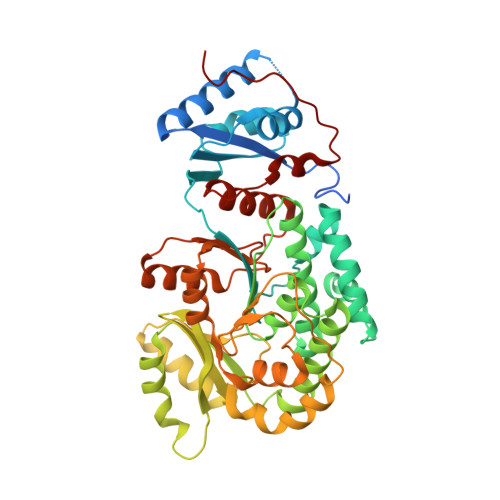Structural Insights into the Substrate Specificity of Acyltransferases from Salinomycin Polyketide Synthase.
Zhang, F., Shi, T., Ji, H., Ali, I., Huang, S., Deng, Z., Min, Q., Bai, L., Zhao, Y., Zheng, J.(2019) Biochemistry 58: 2978-2986
- PubMed: 31199122
- DOI: https://doi.org/10.1021/acs.biochem.9b00305
- Primary Citation of Related Structures:
6IYO, 6IYR, 6IYT - PubMed Abstract:
Salinomycin with antibacterial and anticoccidial activities is a commercial polyether polyketide widely used in animal husbandry as a food additive. Malonyl-CoA (MCoA), methylmalonyl-CoA (MMCoA), and ethylmalonyl-CoA (EMCoA) are used as extension units in its biosynthesis. To understand how the salinomycin modular polyketide synthase (PKS) strictly discriminates among these extension units, the acyltransferase (AT) domains selecting MCoA, MMCoA, and EMCoA were structurally characterized. Molecular dynamics simulations of the AT structures helped to reveal the key interactions involved in enzyme-substrate recognitions, which enabled the engineering of AT mutants with switched specificity. The catalytic efficiencies ( k cat / K m ) of these AT mutants are comparable with those of the wild-type AT domains. These results set the stage for engineering the AT substrate specificity of modular PKSs.
Organizational Affiliation:
State Key Laboratory of Microbial Metabolism and School of Life Sciences and Biotechnology , Shanghai Jiao Tong University , Shanghai 200240 , China.














